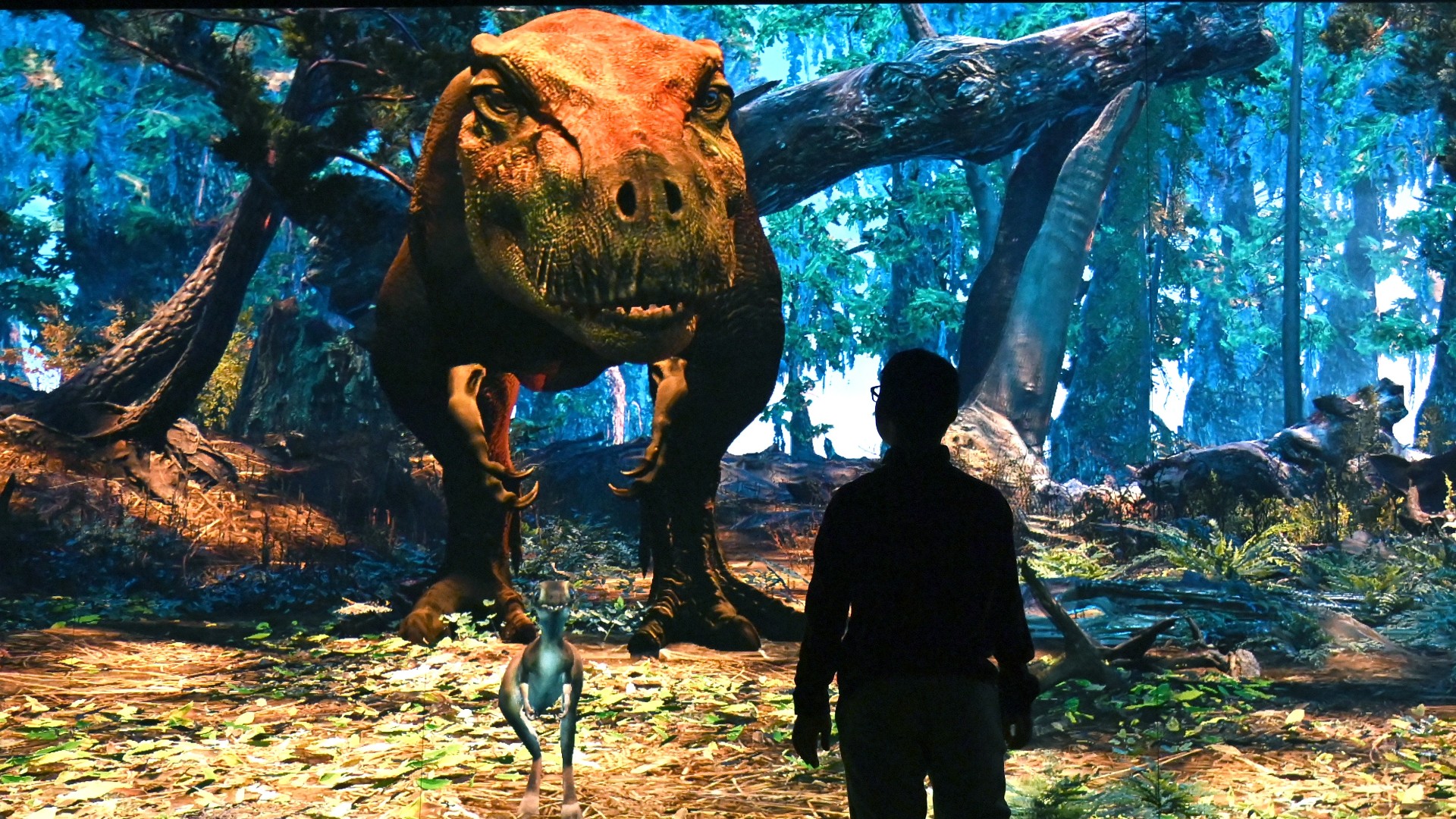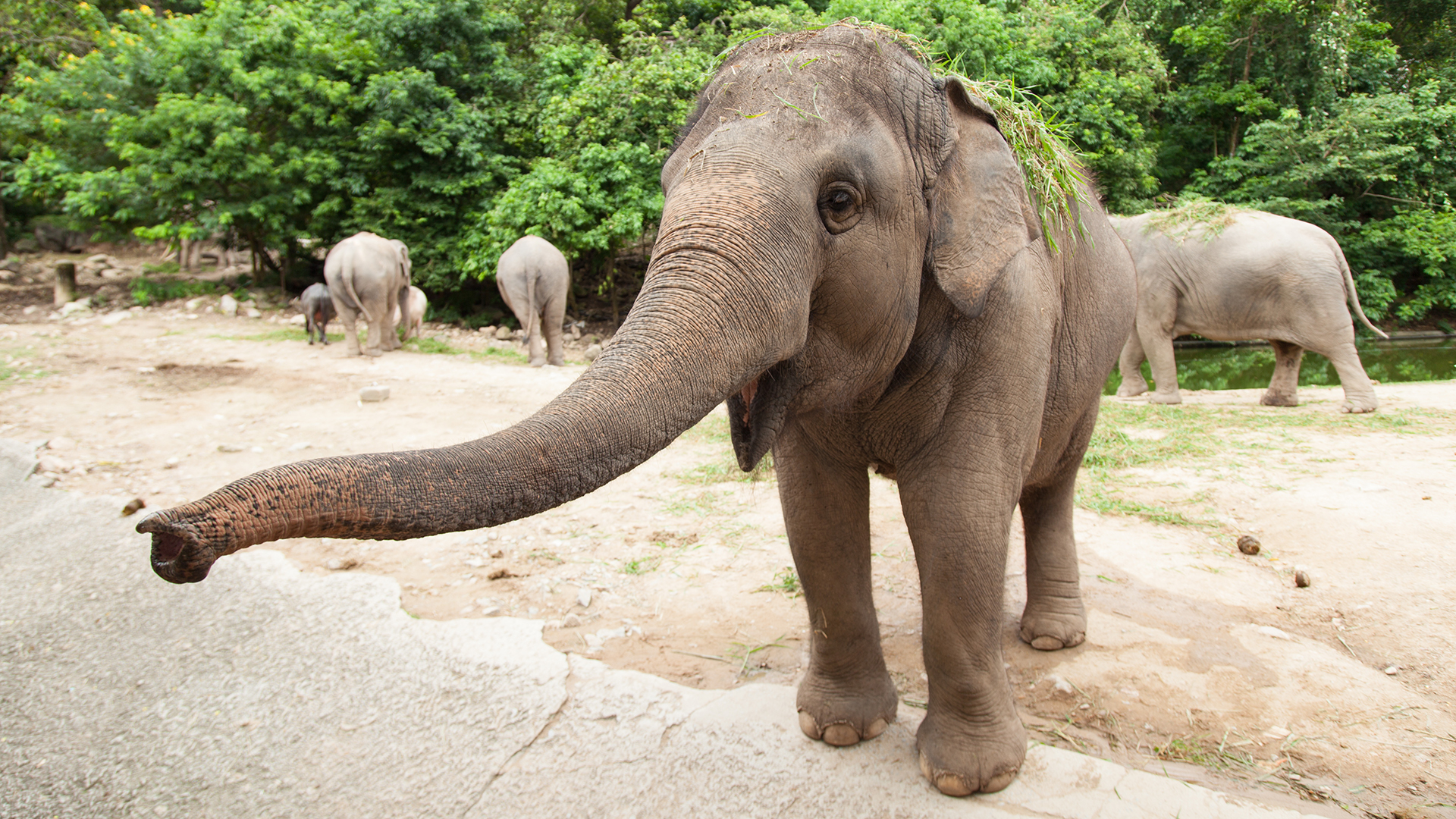
Why don't we have many giant animals anymore?
Dinosaur bones aren't lying: animals really did use to be bigger.

Prehistoric giants used to populate the Earth. These behemoths included mighty dinosaurs, airplane-size pterosaurs, massive crocodiles and snakes, and even armadillos the size of cars. But today, there are just a few big animals on our planet.
What happened? Why aren't there many giants left anymore?
First of all, there's plenty of fossil evidence that the ancient past really did have larger animals — beasts that were humongous but also larger, on average, than today's creatures, Greg Erickson, a vertebrate paleobiologist at Florida State University in Tallahassee who specializes in ancient reptiles, told Live Science. Ever since scientists unearthed the first known stash of dinosaur bones, in the 19th century, researchers have put forth ideas to explain why giants were common millions of years ago but less so today. But no one can point to one definitive answer, Erickson said. "It's so multifactorial."
Related: Why are there so many giants in the deep sea?
Several major differences between dinosaurs and today's largest animals, the mammals, may help explain the loss of behemoths, however. Along with other giant reptiles, dinosaurs could adapt to different niches as they grew bigger over life, hunting smaller prey as juveniles and larger victims as adults. In part, they could do this because they swapped out sets of teeth over a lifetime. "They replace their teeth constantly, just like sharks do. But along the way they could change the type of teeth," Erickson said. Crocodiles, for instance, go from "needle-like teeth to more robust teeth. Mammals don't have that luxury."
Put another way, as some reptilian youngsters ballooned into hulking adults, they traded their relatively puny juvenile teeth for bigger weapons, allowing them, in turn, to hunt bigger meals to fuel their larger bodies.
In dinosaurs, too, air sacs likely extended from their lungs to their bones, creating sturdy but light scaffolding, Edinburgh University paleontologist Steve Brusatte told Scientific American. That gave dinosaurs skeletons that were "still strong and still flexible, but lightweight. That helped them get bigger and bigger and bigger," Brusatte said. "The same way that skyscrapers are getting bigger and bigger and bigger because of the internal support structures." (Of course, though air sacs helped make for strong, lightweight bones, no animal could actually get as big as a skyscraper. That's because body weight grows much faster than bone strength as animals increase in size, as physicist Neil deGrasse Tyson has explained.)
Sign up for the Live Science daily newsletter now
Get the world’s most fascinating discoveries delivered straight to your inbox.
Mammals lack such air sacs, though, "that can invade the bone and lighten up the bone," Brusatte said, "So elephant size or a little bit bigger, that might be the limit as to where mammals, at least on land" can get. … You can't really get mammals, it doesn't seem, to be the size of dinosaurs."

As warm-blooded, or endothermic creatures, mammals also need a lot of fuel. "Elephants are full endotherms, and the dinosaurs, at least the herbivorous dinosaurs, probably mostly were not," Geerat Vermeij, a professor of geobiology and paleobiology at the University of California, Davis, told Live Science. "So the food requirement for, say, a gigantic elephant would be … perhaps 5 times greater than that of even the very largest dinosaurs."
Paleontologists have debated whether dinosaurs were cold- or warm-blooded. But current science places many animal species on a gradient between cold- and warm-bloodedness, and dinosaurs were probably "on the low end of the warm-blooded range," Erickson said. That made a large body less energetically expensive for dinos.
Huge size also requires the right environment. In a 2016 study published in the journal PLOS One, Vermeij concluded that giantism depends mostly on sufficient resources produced and recycled by "highly developed ecological infrastructure." In other words, the ecology needs to produce sufficient oxygen, food and habitat to grow a truly giant creature. Such ecologies had seen great development by the middle Triassic period, near the beginning of the age of dinosaurs, Vermeij wrote.
In one potentially important environmental change, ancient atmospheres had higher concentrations of oxygen. This may have played a role in gigantism, particularly among insects. Wingspans among prehistory's biggest bugs tracked ancient increases in oxygen concentration, a 2012 study in the journal Proceedings of the National Academy of Sciences reported.
Brewers of gigantism shouldn't forget the crucial ingredient of time, either. Though animal lineages tend to get larger over the generations, it takes a vast amount of evolutionary time to reach giant sizes, Erickson said. And mass extinction events tend to wipe out larger creatures, Vermeij said, so these events can leave giant-animal slots unfilled for tens or hundreds of millions of years. "It took about 25 million years for the first mammals to reach a ton in weight," he said. In the case of woolly mammoths, decimated by climate change and human hunters just 10,000 years ago, it may not be a coincidence that we modern humans don't see such huge creatures: Our own ancestors helped kill them off not so long ago.
For Vermeij, the most comprehensive explanation for decreasing size comes not from physiology or environment, but from social structure. "The evolution of … organized social behavior, not just herds but really organized hunting" in mammals introduced a new form of dominance, he said. "Group hunting by relatively small predators makes even very large prey vulnerable. Individual gigantism has in effect been replaced on land by gigantism at the group level," he wrote in the 2016 study. That is, smaller individuals working together, as happens with wolves and hyenas for example, may constitute a more effective way of getting big than building a huge body. As a result, "gigantism lost its luster on land," Vermeij wrote.
Social organization may also help explain a rather, ahem, giant exception to the timeline traced here: In the ocean, the biggest animals to ever live still exist today: blue whales. Sea life, Vermeij said, makes long-distance communication more difficult, hindering the development of complex hunting groups. The evolution of such groups "has happened on land much more than, at least until recently, that has happened in the ocean," such as with killer whales, he said.
Originally published on Live Science.

Michael Dhar is a science editor and writer based in Chicago. He has an MS in bioinformatics from NYU Tandon School of Engineering, an MA in English literature from Columbia University and a BA in English from the University of Iowa. He has written about health and science for Live Science, Scientific American, Space.com, The Fix, Earth.com and others and has edited for the American Medical Association and other organizations.









